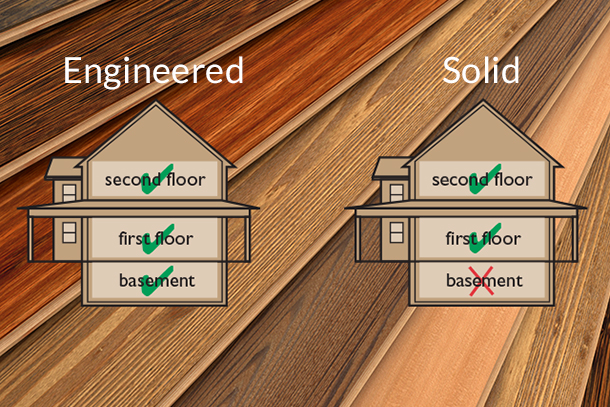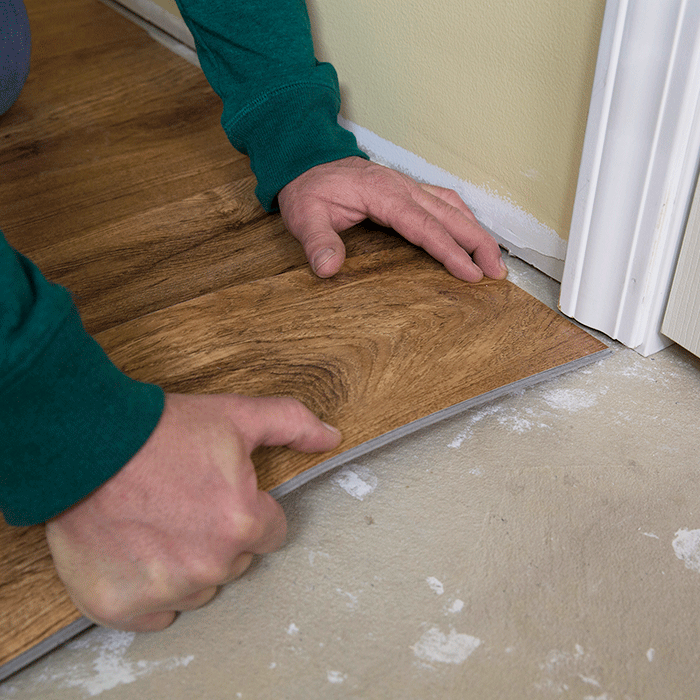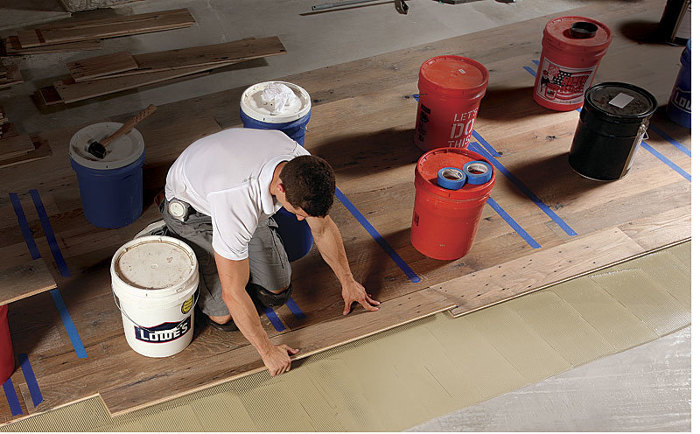TYPES OF FLOORING BEHAVE DIFFERENTLY
Engineered floors behave somewhat differently than solid wood flooring. Al though engineered wood flooring changes less dimensionally than solid wood flooring, engineered floors are notorious for developing gaps between the butt ends of boards. This is because most engineered wood flooring expands the same amount in all directions. The lengths of the boards are many times their width, which magnifies any dimensional change along the length. For this reason, it’s important to leave the same amount of expansion clearance around the entire perimeter of the floor. Floating wood floors behave even more dif ferently. Since they are unattached to the subfloor, they behave like one giant board and so all the expansion ends up at the perimeter of the room. Conse quently, the expansion gap around the entire room is crucial.
Laying Out the Floor
With a simple rectangular floor, the first step in layout, after putting down the vapor retarder (see chapter 3), is to measure the room perpendicular to the direction the flooring will run. It should be the same width on each end.
If that’s the case, measure out the proper clearance from the wall plate, plus the full width of a flooring board, not including the tongue, and snap a line on the floor. The first row of flooring will align here. (i have a hard time aligning the tongue to a chalkline, so I align it to the bottom of the floorboard instead.)
In many rooms, walls that should be parallel aren’t. One side of the room may be 1 in. wider than the other side. If nothing was done to compensate for this, the last row of boards would be tapered an entire inch—nearly half the width of a standard 2V4-in. piece of strip flooring. To minimize the amount of taper required for the last row of boards, it’s best to split this difference between the two measurements so it ends up with only a 1/2-in. taper on each wall. Although a 1/2-in. taper is still not desirable, it is much better than a 1-in. taper. (Alternatively, you can use a wider board for the first row with its back side tapered to keep the gap small enough to be covered by the trim.)







